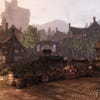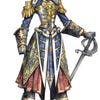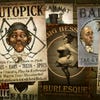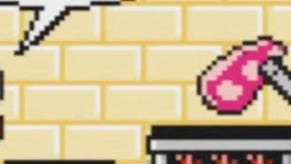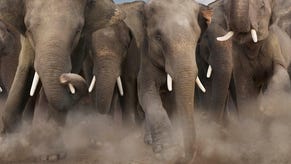The Art of Fable III
Science and industry.
A few weeks before the launch of Fable II, I had a chance to speak to two of the key artists on the team about their vision for the project and how they'd gone about creating the game's unique look. With the launch of Fable III looming, Lionhead invited Eurogamer back to talk to the art team once again.
I sat down with the game's art director, John McCormack, and concept artist Mike McCarthy, to discuss how their work has changed since Fable II, where the inspiration for the new game has come from - and how the lands of Albion have changed since we last visited them.
By the end of Fable II, we weren't entirely happy with the engine, for a start. There were problems with the characters, some of the lighting and environments, which we wanted to improve on - we wanted to push the technology a little bit further.
To be honest though, the real problem was the focus of the art direction. In Fable II, we had the highwayman aesthetic, along with a sort of tarot card aesthetic coming from the Theresa character. We tried to focus on those - but as the design went on, stories changed and it ended up deconstructing a little bit.
This time, we sat down with the designers and decided to name exactly the words which would define Fable III, and to focus all of the art direction down that alley. We ended up with "revolution" as the key word, and with the industrial revolution as the main theme. We've looked at the European styles of architecture, painting, clothing, fashion - the whole lot - as defined by the industrial revolution, as well as by colonisation and exploration. It's a much tighter artistic style.
We were stricter, this time. There were a lot of good discussions which made sure that the entire project stuck to a visual track. Although we wanted to go down an industrial route, it's so tempting to drift off, to explore different avenues. Occasionally you have to go "no, no no no! Back to industrial!" - to keep it focused in that sense.
I think it really helped that this time we had some very strong themes right from the start. In Fable II, the story drifted about a bit - but this time we had a strong theme, the industrialisation of the whole of Albion, and with the character, the whole revolution theme.
The Fable franchise has always had a strong class system, a hierarchy built into the structure of its towns. This game, in particular, is the one where it's most obvious, most exploited - it goes the whole way from the king down to child labour, and the player navigates every rung of the ladder between them.
It's much easier for us if there's a strong narrative like that to guide the visuals. That's the main focus that we had for this game - to get a strong narrative, which everyone understood early on.
I actually fought for a long time for us to completely set Fable III somewhere else - as an artist, you don't want to be bogged down too much and repeating anything. So we have the Aurora thing, which is really exciting, and we all got sucked into that - we got to create our own language, our own religion, our own race of people... Everything from the incense burners in the houses right up to the carvings they've made in the side of mountains, everything was meticulously detailed. Artists, especially art directors and concept artists, love nothing more than to explore that.
That made the idea of looking at Bowerstone a bit less exciting, obviously. But, as it turned out, we actually thrived on the Bowerstone stuff - especially once we started getting into the idea of the early industrial revolution. It was actually quite exciting.
It was quite instinctual too - we knew that the story involved war, and munitions, and colonisation... It just clicked, and we all said, "Napoleonic! Let's watch Sharpe! Let's get Sharpe's Rifles, come on!" That's when the look of the soldiers clicked, the military uniforms...
With the industrial revolution, you had the post-industrial world - that's when everything worked. You had the Great Exhibition, and science, and everybody looking at these great wonders of the modern world. But we're exploring the pre-industrial revolution, when everything was broken, and experimental.
That was actually more exciting, because you've got these people running factories and so on, and they're all trying stuff out for the first time. They're making guns in Bowerstone, sending people to war with them, and they just blow up - they don't really know how to make these things, but they're trying. That gave us a lot of room for inventions. We could think from the point of view of early industrial ideas, what those people would have done.
They believed that they could do anything. That's the thing. They believed that anything was possible.
Yeah, and hardly anything ever worked!


